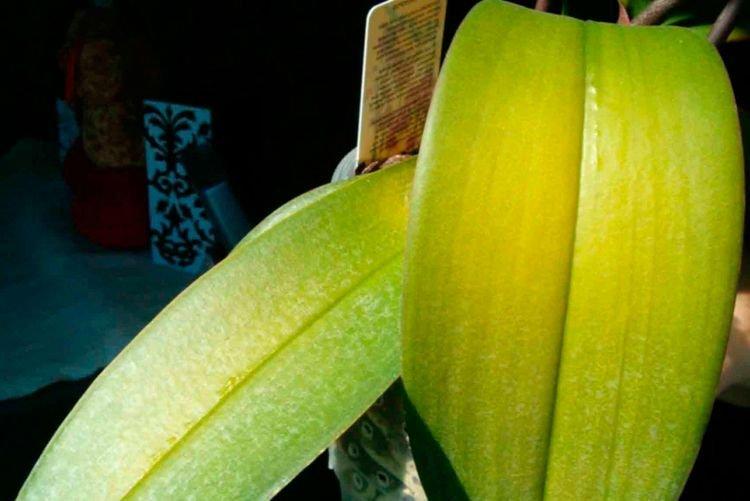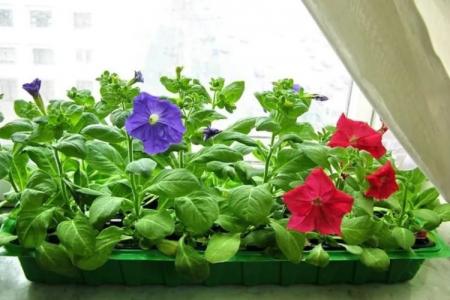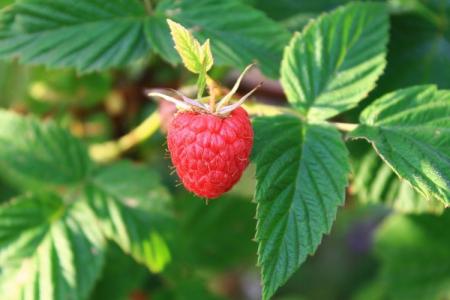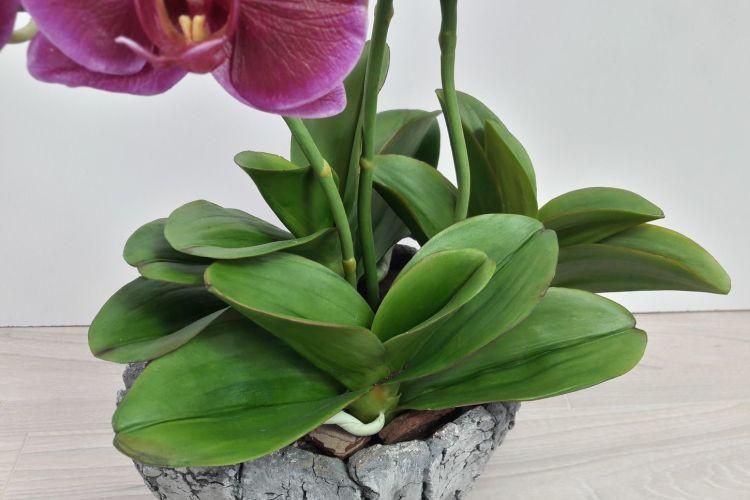
Orchid is a special flower that requires special maintenance and care. But, like any other plant, it can get sick, suffer from a fungus and even pick up a virus. Here it is important to act as quickly as possible, and for this you need to establish the reason. Let's talk about the most common leaf diseases!
Bumps and bumps on the leaves
Sometimes the leaves swell, take on irregularities and tubercles. This can be a fungus or a consequence of the fact that intruders have settled on the orchid.
- Small tubercles on the leaves can be myceliums or clutches of pests;
- Bulky swelling on seemingly healthy leaves is puffiness when the orchid does not have time to process all the moisture it absorbs from the ground. It is necessary to reduce watering, dry the substrate and give the plant time to recover.
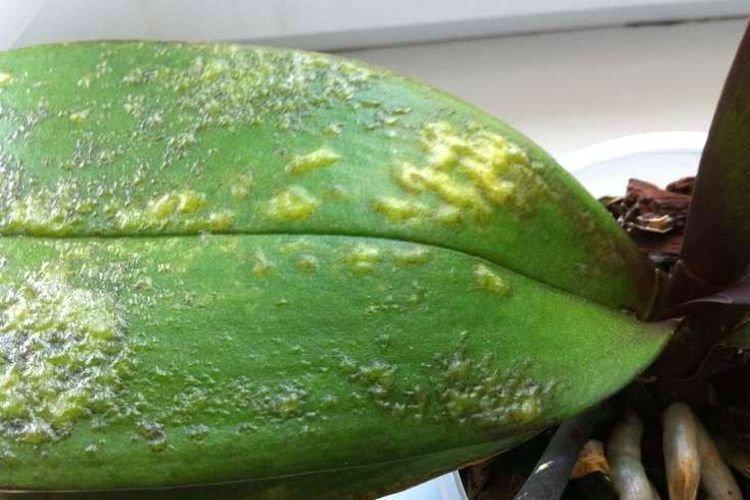
Leaves turn yellow and dry
Orchids seem so delicate that many owners are afraid to breathe on them. The main thing is not to panic if the leaves begin to dry or turn yellow.
- Most often, orchids suffer from burns, because lighting is not suitable for them, because different types of requirements differ;
- The leaves turn yellow and dry, and the shoots become thinner in the last stages of Fusarium. This is a disease of the root system, so periodically inspect the root zone;
- Yellow stains in the form of rings, ovals and rhombuses cover the leaves of the orchid that has picked up the cymbidium mosaic;
- Fancy ring patterns appear on orchids infected with the odontoglossum virus. On broadleaf varieties, the manifestations are slightly different, and they are covered with bizarre lines and strokes.
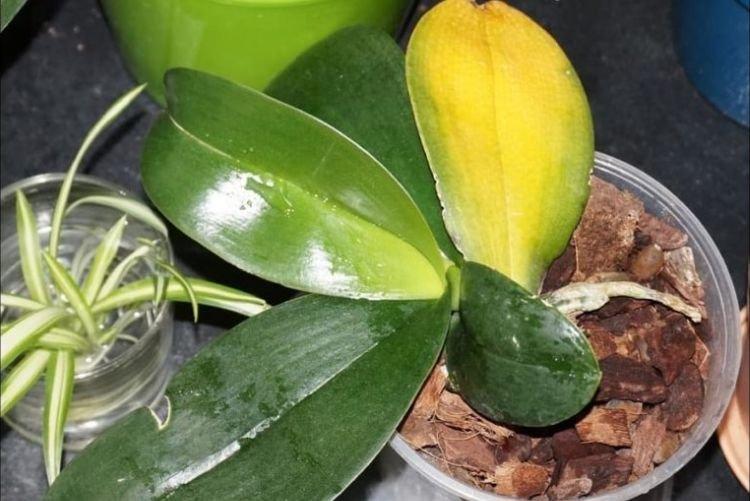
Brown spots on orchid leaves
Red and brown spots on orchids only look scary. Most often this is a commonplace fungus, which is getting rid of with fungicides!
- Gray rot does not immediately appear in the form of a gray fleecy plaque. At first, these are small brown spots of irregular shape that grow and merge;
- Brown spots with small black dots - symptoms of anthracnose. Orchids get sick with it on hot and humid days or due to constant dampness in the pot;
- Watery brown spots indicate brown rot. The disease quickly spreads further, and if the stem is damaged, the plant will die;
- Bright red spots - a classic rust that affects almost all flowers. Fortunately, for orchids, these are rather isolated cases;
- Phytophthora in the later stages leaves not only brown stains on the leaves, but also open foci of decay.
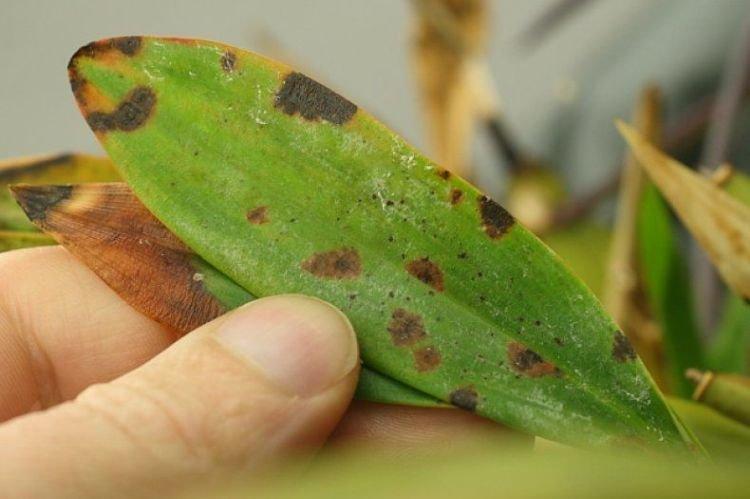
Orchid leaves turn black
When the leaves turn black, this is really a reason to strain and act as soon as possible. Otherwise, there is a high probability of missing an infection that will completely destroy the orchid.
- The spots become watery and transparent, and then turn black when the flower is sick with black rot. If you ignore the disease in the early stages, then the orchid will die;
- Necrotic foci on the leaves protrude due to root rot. Consider the roots because they turn gray and become whitish;
- After aphids, scale insects, worms or other pests have settled on an orchid, a sooty fungus often remains. The weakened immunity of the flower is like an invitation for a black bloom;
- Black necrotic spots on the orchid - a manifestation of phylosticosis. Popularly, this infectious fungus is called "black spot";
- Large yellow spots, densely covered with black dots - this is an infectious cercospora.
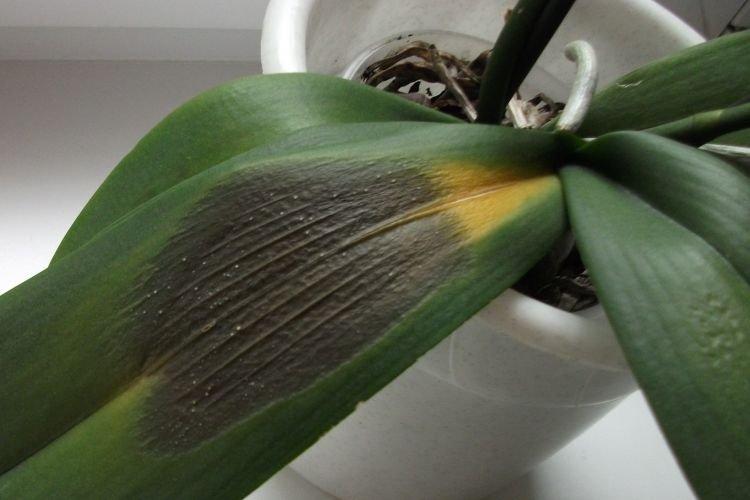
White bloom on orchid leaves
White bloom periodically appears on the leaves of any indoor and outdoor plants. This is also a fungus, and if you find it in time, it will not have time to cause irreparable harm.
- The most common case is powdery mildew.On the one hand, it is truly ubiquitous, and on the other, it has long been well treatable;
- Sticky transparent or whitish liquid appears on the leaves when agricultural technology is violated or if the plant is attacked by pests. But some varieties of orchids secrete sticky droplets, specifically attracting insects;
- Spider mite leaves a whitish cobweb, which also resembles a relief plaque;
- A thick white bloom in flakes along the leaves leaves a mealybug.
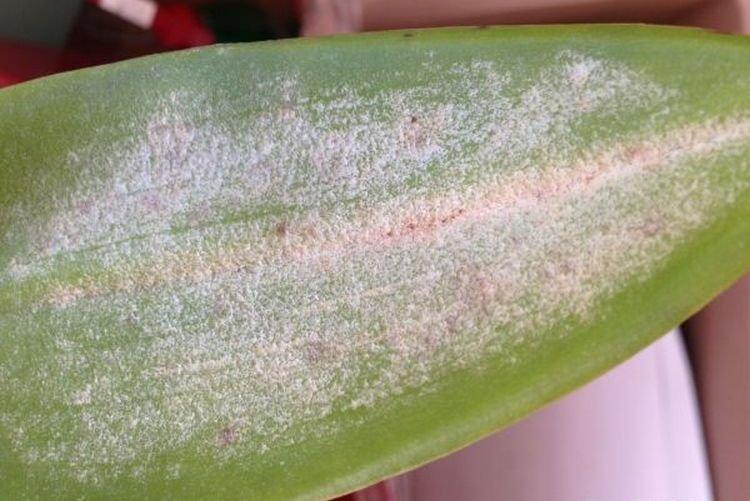
Pale and light leaves
Although orchids are not loved for their leaves, this is not a reason to ignore their condition. If the plates suddenly began to fade - analyze the care of the flower and adjust the conditions of its maintenance!
- The leaves become pale, small and weak when they are chronically lacking in light;
- Variegated varieties fade and lose color if they do not have enough watering and fertilizers;
- Whitish spots appear on the leaves of orchids affected by chlorosis. Depending on the initial pigmentation, they may turn pinkish.
